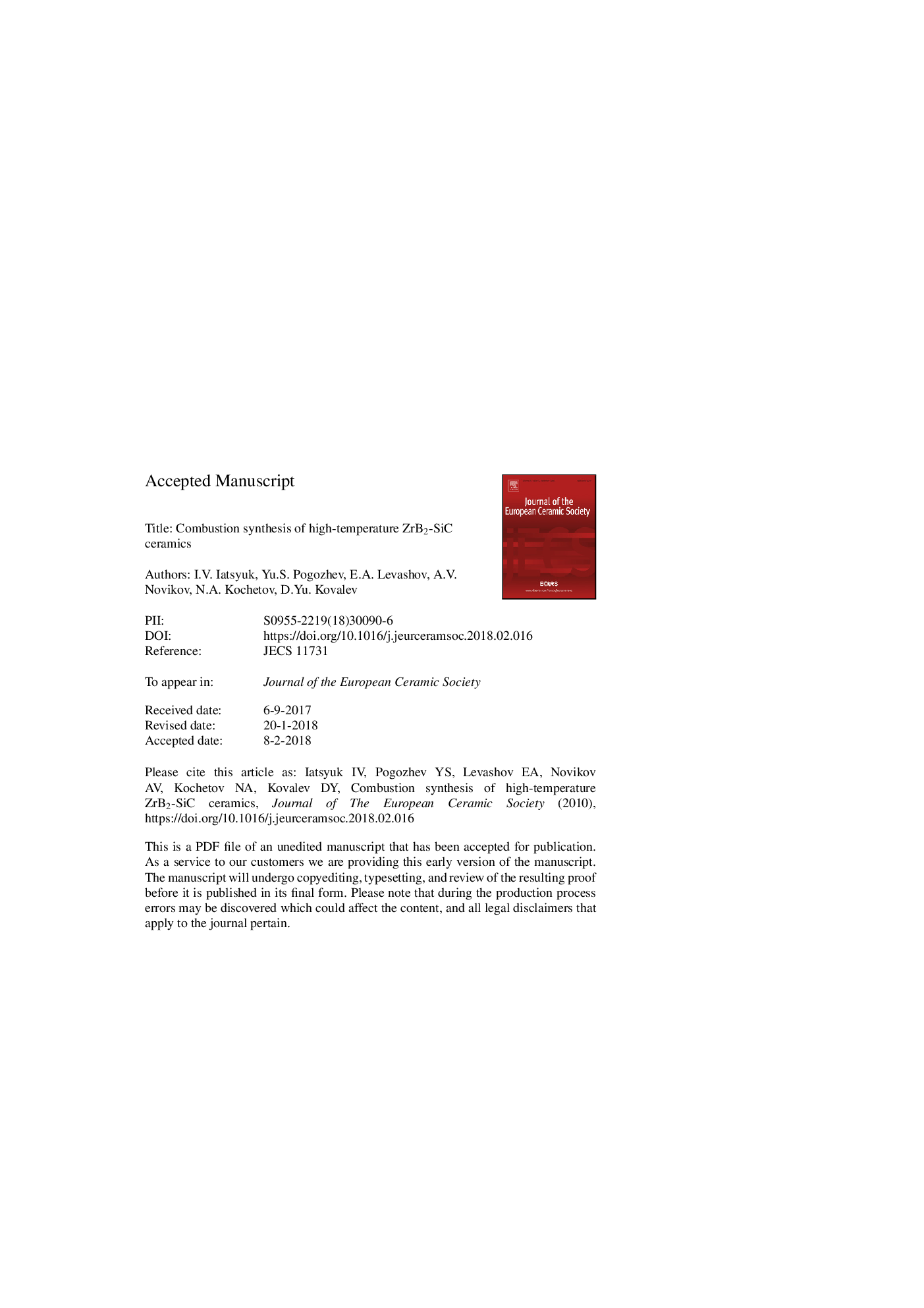| Article ID | Journal | Published Year | Pages | File Type |
|---|---|---|---|---|
| 7898345 | Journal of the European Ceramic Society | 2018 | 29 Pages |
Abstract
The work is dedicated to researching into combustion kinetics and mechanism as well as the stages of the chemical transformations during self-propagating high-temperature synthesis of ZrB2-SiC based ceramics. Dependences of the combustion temperature and rate on the initial temperature (T0) have been studied. It has been shown that the stages of the chemical reactions of ZrB2 diboride and SiC carbide formation do not change within the range of T0â=â¯298-700â¯Ð. The effective activation energy of the combustion process amounted to 170-270â¯kJ/mol, from which it has been concluded that chemical interaction through the melt plays a leading role. The stages of the chemical transformations in the combustion wave have been studied by dynamic X-ray diffraction. First, ZrB2 phase forms from Zr-Si melt saturated with boron, and SiC phase is registered later. The SHS method has successfully been used in order to obtain ZrB2-SiC composite powders and compact ceramics with a silicon carbide content of 25-75%. The ceramics are characterized by a residual porosity of 1.5%, hardness up to 25â¯GPa, the elastic modulus of 318â¯Â±â¯21â¯GPa, elastic recovery of 36% and thermal conductivity of 54.9â¯W/(mâ¯Ãâ¯K) at Troom.
Related Topics
Physical Sciences and Engineering
Materials Science
Ceramics and Composites
Authors
I.V. Iatsyuk, Yu.S. Pogozhev, E.A. Levashov, A.V. Novikov, N.A. Kochetov, D.Yu. Kovalev,
